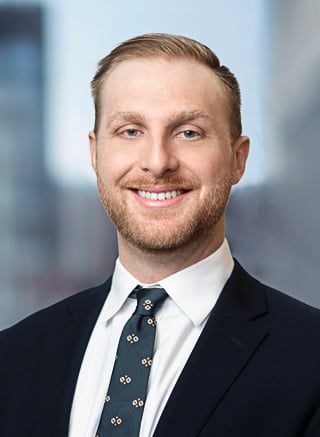That Seems Presumptuous: NCAA’s Bylaw Changes Evidentiary Standard for NIL Infractions
Intellectual Property News
Just under two years after the Supreme Court’s landmark decision in National Collegiate Athletic Association v. Shawne Alston, et al., which opened the door for college athletes to be compensated for the use of their name, image, and likeness (NIL), the National Collegiate Athletic Association (NCAA) made its most significant move toward regulating possible abuses of NIL in college sports. Through an amendment (adopted October 2022, but effective January 1, 2023) to the bylaws concerning the NCAA’s infractions program, the NCAA adopted a new presumption, as well as a new evidentiary standard, for NIL cases subject to NCAA regulation:
19.7 Standards of Review and Resolution Methods (Level I/II Cases).
19.7.3 Violations Presumed in Select Cases. In cases involving name, image and likeness offers, agreements and/or activities in which related communications and conduct are subject to NCAA regulation, the infractions process (including interpretive requests) shall presume a violation occurred if circumstantial information suggests that one or more parties engaged in impermissible conduct. The enforcement staff may make a formal allegation based on the presumption. The hearing panel shall conclude a violation occurred unless the institution or involved individual clearly demonstrates with credible and sufficient information that all communications and conduct surrounding the name, image and likeness activity complied with NCAA legislation.
Under the amended language, NIL cases would, based on circumstantial evidence, be subject to a presumption that a violation has occurred. It would then be incumbent on the NCAA member institution to show that the alleged violation has not occurred. Whereas the NCAA need only present circumstantial evidence in order to gain the presumption of a violation, the member institution would be required to “clearly demonstrate[] with credible and sufficient information” that all activities surrounding the alleged violation were compliant with the NCAA’s rules and regulations. Previously, and for all other Level I/II cases going forward, allegations of NIL violations were only concluded to be violations where, per Section 19.7.2 of the bylaws, the allegation was “supported by credible and sufficient information[.]” In football terms, the adoption of Section 19.7.3 makes circumstantial evidence of an NIL infraction the “ruling on the field” and puts the onus on the member institution to “go to the booth” and prove that there was not a violation.
The amendment signals a concerted effort and commitment by the NCAA to regulate NIL post-Alston in the wake of patchwork state legislation, failed attempts at crafting federal legislation, and calls from conference commissioners to rein in what some viewed as widespread abuse of NIL as disguised pay-for-play. NCAA Vice President of Enforcement Jon Duncan has openly expressed his opinion that past investigations into potential NIL violations have failed not because there were not violations but because of lack of witness cooperation and documentary evidence:
[In the past], we’d hold our nose and move on because without documentary information and evidence to confront witnesses with, they tend to lie to you. So we were stuck with cases that smelled to high heaven but could not substantiate them under the procedures that we had.
“If it looks like a duck and quacks like a duck, it’s a duck,” at least according to Duncan when it comes to potential NIL violations. Now, Duncan and the NCAA have a powerful enforcement tool. They can rely on less direct, and less substantiated, information to allege that a violation has occurred and are no longer at the mercy of uncooperative witnesses (the NCAA has nothing analogous to subpoena power making it difficult to have witnesses cooperate, even when those witnesses were the same people to bring the potential violation to light). Putting the burden on member institutions to show that a violation has not occurred is also likely to encourage more frequent and open communication between member institutions and the NCAA, which forces schools to more sufficiently document and report on the NIL activities of their students, and to discourage member institutions from working with NIL collectives, despite the numerous states that have amended NIL legislation to promote that relationship.
While the amendment does not create new violations, it was crafted after review of a report prepared by the Division I Board’s NIL subcommittee that specifically set forth activities that would create the presumption of a violation:
- An institutional staff member directly or indirectly contacts a prospect who is not in the NCAA Transfer Portal to discuss NIL opportunities.
- A representative of the institution’s athletics interests (e.g., individual booster or collective) contacts a prospect or their family about potential NIL opportunities prior to the prospect signing with the institution.
- An institutional staff member in any way offers, communicates and/or guarantees an NIL opportunity to a prospect, their family, or representatives during their recruitment.
- A representative of the institution’s athletics interests announces and/or enters (whether verbally or in writing) into an NIL agreement with a prospect prior to their enrollment at the institution.
- An NIL agreement requires a prospect to be in the locale of the institution prior to enrollment in order to fulfill the terms of the agreement (e.g., local appearances).
- A collective and/or its representatives engage in recruiting activities and/or the promotion of specific prospects prior to their commitment to the institution.
- An institutional staff member, booster or other institutional representative solicits, facilitates and/or provides additional NIL opportunities in order to secure a student-athlete's continued enrollment at the institution.
It is likely that the NCAA’s initial investigations will target these exact types of activities. Of particular concern is the notion that a school could be hit with an allegation of, accompanied with the newfound presumption, a violation because of the actions of a booster outside of the institution’s control. NCAA member institutions, sports agents, collectives, boosters, and anyone else working in the realm of NIL for college athletes would be well-served by increasing documentation efforts surrounding any communications and contracts entered into concerning NIL deals.


